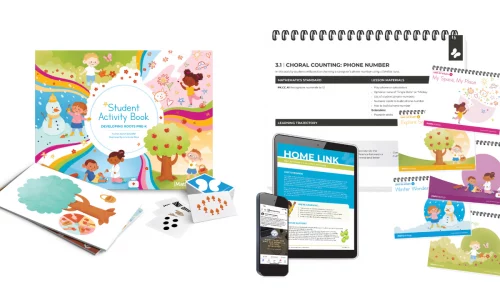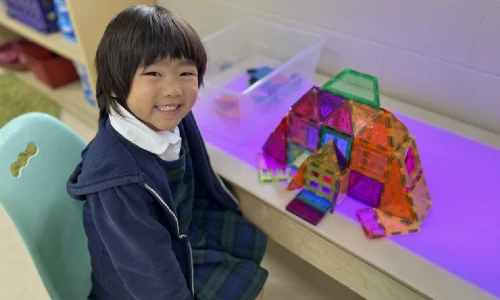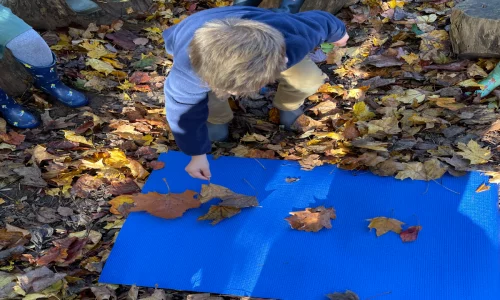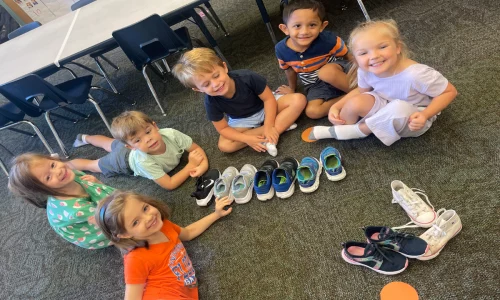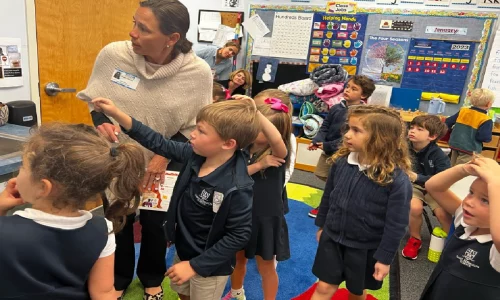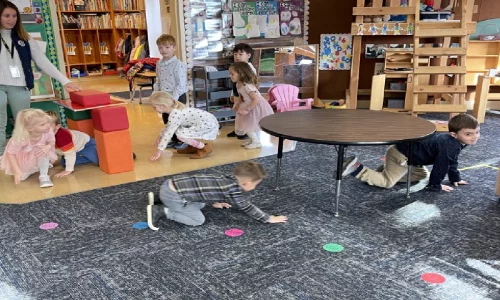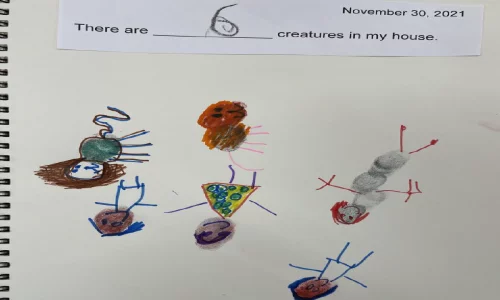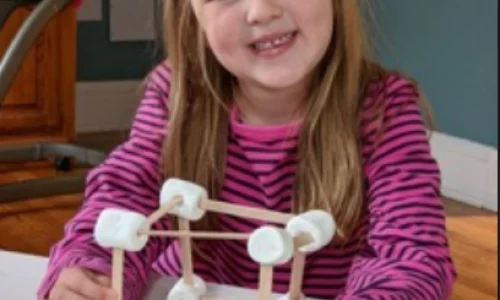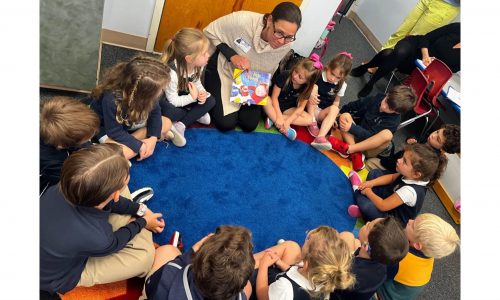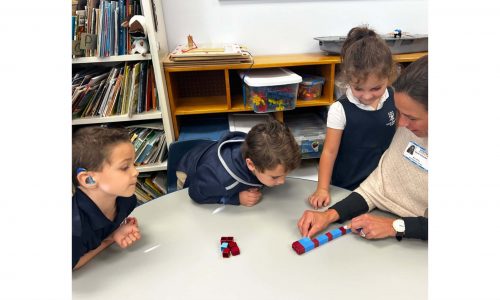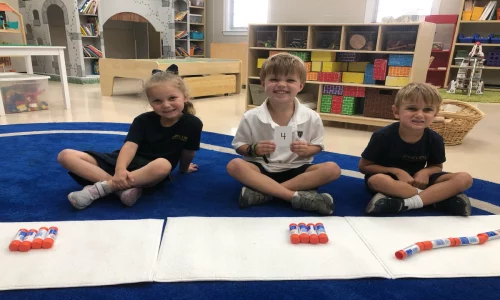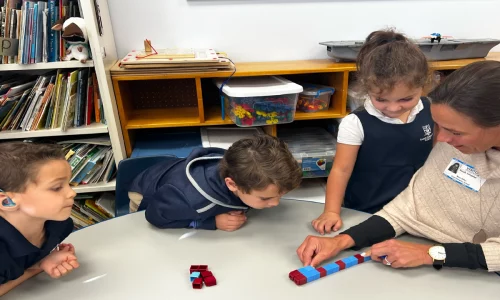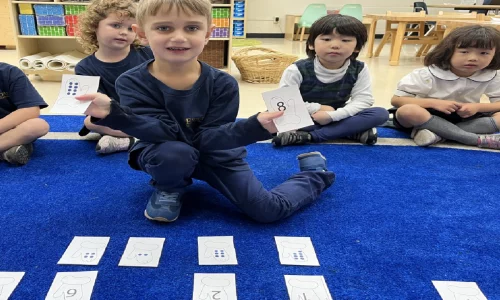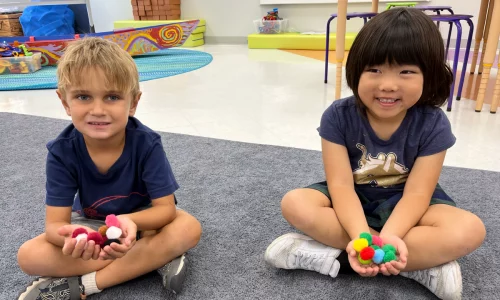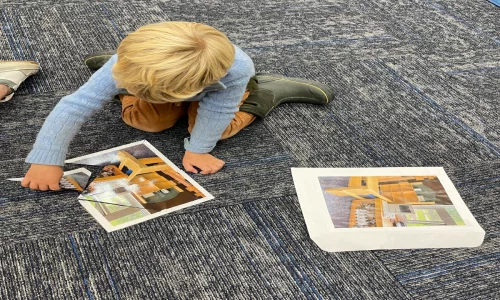Foundational mathematical concepts delivered through playful, engaging activities.
Developing Roots is Mathodology’s comprehensive early childhood mathematics program designed for Pre-K and Kindergarten students. The program focuses on foundational mathematical concepts delivered through playful, engaging activities.
It is designed to build a strong base in number sense, problem-solving, and logical thinking from an early age.
Key Features
Developing Roots was created by teachers for teachers to address the most common concerns at the early elementary level.
Engaging Activities
Interactive and fun tasks that stimulate young minds. Tasks are differentiated to meet the needs of all student levels and provide an exploratory hands-on, center-based approach to learning mathematics.
Conceptual Understanding
Focus on understanding core mathematical concepts rather than rote learning. A comprehensive spiral curriculum allows for continuous exposure to concepts throughout the year.
Play-Based Learning
Activities are designed to be enjoyable and educational, fostering a love for math. Games are developed to connect the classroom and home.
Curriculum Overview, Pre-K

Unit of Study 1: My Space, My Place
The activities in this unit help children discover their own unique traits and explore attributes they share with peers while teachers lay the foundation for what math time looks, feels, and sounds like. Through modeling and questioning, teachers encourage students to express their thoughts and questions about the math they are exploring. In this opening unit, teachers introduce math routines such as choral counting activities and quick looks that will be incorporated into daily activities. The lessons in UOS1 explore math concepts in each of the major strands with the greatest emphasis on helping students develop a beginning understanding of number, number names, and numerals.
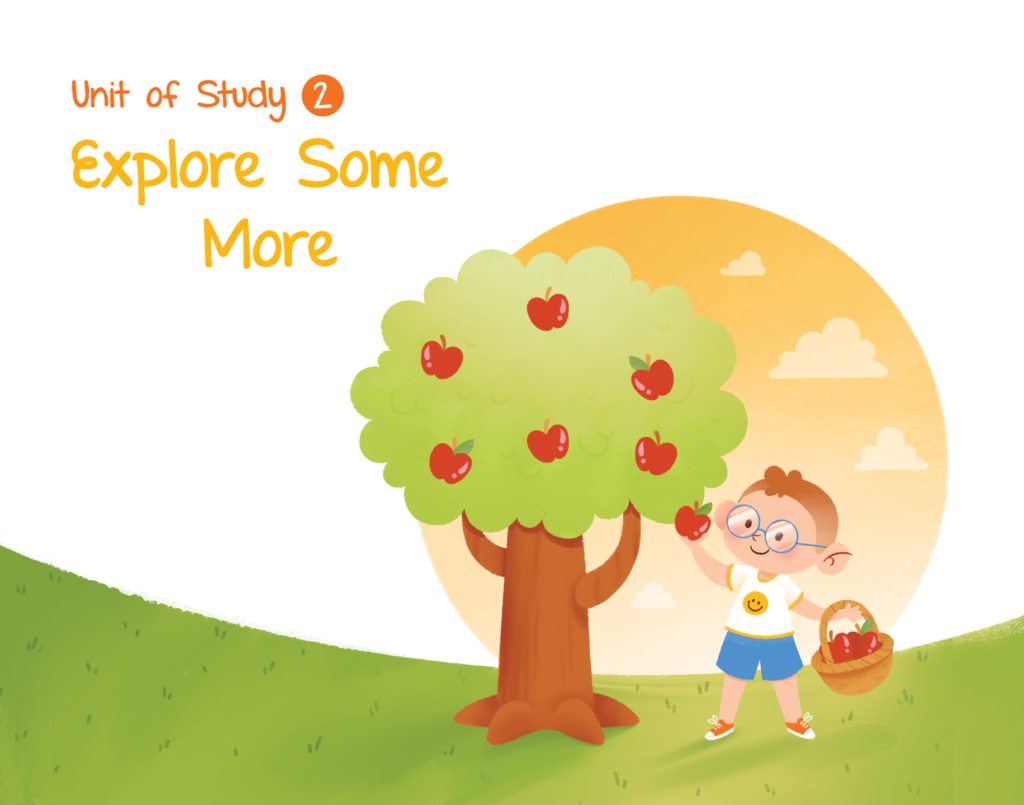
Unit of Study 2: Explore Some More
Unit of Study 2: Explore Some More (UOS2) begins with students looking outdoors to learn more about the world around them. Through an exploration of weather, students learn to identify and compare attributes and to gather and represent data on graphs. While discovering some of the wonders of fall (leaves, apples, pumpkins, etc.) children practice their counting and comparing skills as well as pattern and measurement skills. In UOS2 students also investigate the differences between farm life and city life. The farm life lessons provide opportunities to represent data on a graph, use positional words to describe locations, and explore geometry with pattern blocks. While learning about city life, students build structures and learn to identify shapes and their attributes. At the end of the unit, storytelling activities facilitate the exploration of part/whole relationships and composing/decomposing sets. Finally, through graphing activities students learn to gather and organize data, providing further opportunities for counting and comparing sets.
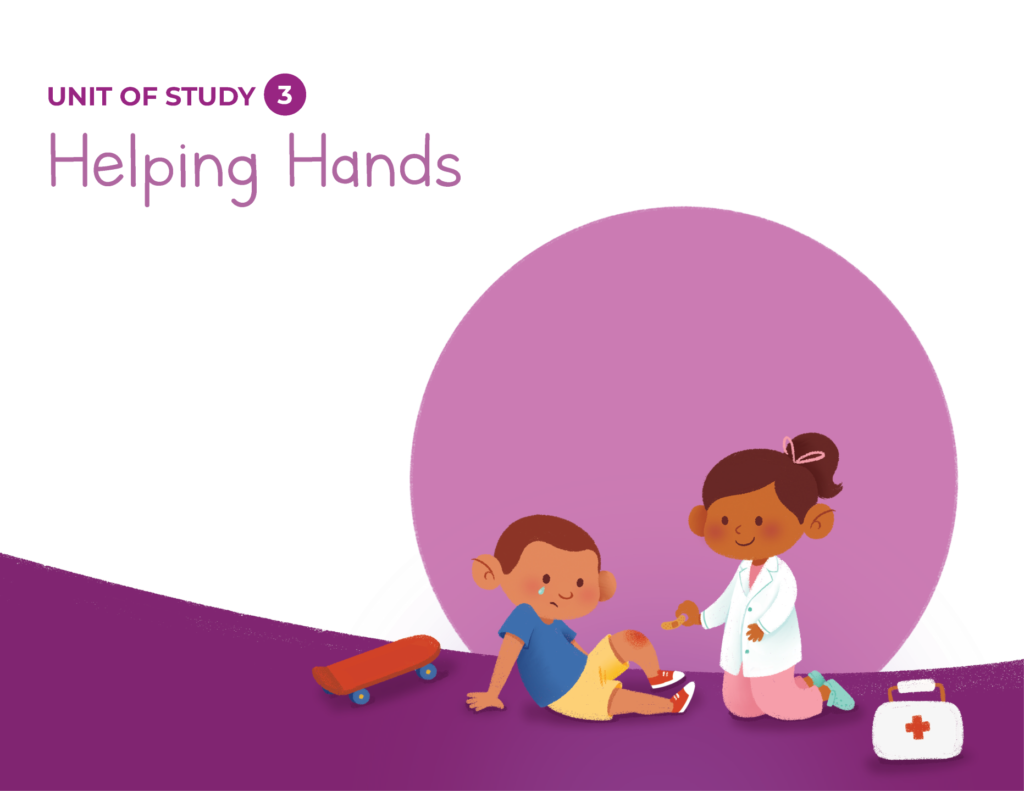
Unit of Study 3: Helping Hands
In Unit of Study 3: Helping Hands (UOS3) children explore math while learning about community helpers. Lessons in this unit are centered around firefighters, doctors, nurses, police officers, and mail carriers. There is also a focus on safety awareness as children practice numeral recognition by learning their own phone numbers and practicing pedestrian and traffic safety rules. UOS3 provides lessons in each of the math strands with an emphasis on sorting and identifying attributes, patterning, and number concepts. While the standards addressed are the same as in UOS1 and UOS2, the tasks are varied. The quick look activities in this unit require students to join sets to identify an “all together” total, and the patterning activities are more complex. The activities in the unit requiring children to identify common attributes and sort sets accordingly provide ample opportunities for students to count and compare quantities. Lessons in this unit also incorporate games for students to play, individually and with partners, to explore number concepts.

Unit of Study 4: Winter Wonderings
Winter Wonderings is the theme for the lessons in the fourth unit of study (UOS4). Students learn about animals preparing for winter by playing games, graphing data, and comparing animal tracks. They practice subitizing, counting, sorting, and patterning through purposeful play with winter clothing and a favorite wintertime treat, hot chocolate. Students also explore the big ideas of identifying common attributes, symmetry, and composing/decomposing sets through lessons about snowmen, snowflakes, and snowballs as they discover the wonders of a snowy day. All strands of math are featured in UOS4 with an emphasis on both making sense of numbers and the identification of relationships. Throughout these lessons, teachers encourage students to explain the reasoning behind their answers, participate in number talks, and evaluate their own work while allowing time for self-correction. Routines such as choral counting and quick looks are practiced further, and the new routines of counting jars and estimation jars are introduced.
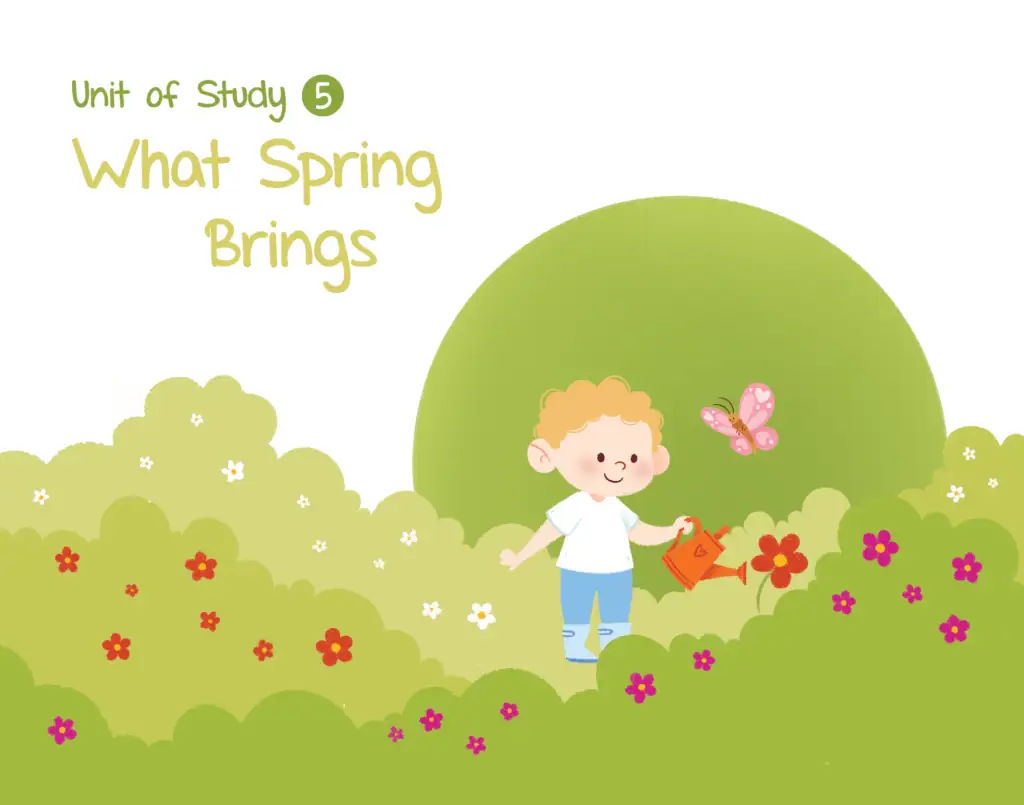
Unit of Study 5: What Spring Brings
In UOS5 students explore math concepts while learning about nature and “what spring brings.” Lessons about butterflies and caterpillars, which incorporate children’s literature, songs, art, and fine motor activities, provide children with opportunities to practice counting, comparing sets, subitizing, sorting, and making patterns. Students delve into the key math concepts of collecting and organizing data and measurement while learning about plants and seeds and fruits and vegetables. A look into the life cycles of butterflies and flowers helps children learn to place objects and events in sequence and identify patterns in nature. Fine motor skills are practiced in UOS5 with pin pushing, clothespin clipping, and cutting activities. More complex hands-on activities such as planting seeds, making a fruit salad, juicing oranges, and building butterfly feeders and flower bouquets enable students to express their creativity while actively engaging in lessons. Activities in UOS5: What Spring Brings addresses math standards in all of the major strands: number sense, measurement, relationships and patterns, representing data, and geometry. Routines, such as counting jars, sorting jars, and choral counting, are extended by having children identify patterns as teachers record the counting numbers.
Curriculum Overview, Kindergarten
Book A
Chapter 1: Number
- Topic 1: Counting Sequence
- Topic 2: Sorting
- Topic 3: Numbers to 10
- Topic 4: Ordinal Numbers
- Topic 5: Numbers to 20
- Extensions: Odd and Even Numbers
- Extensions: Numbers Beyond 20
Chapter 2: Measurement
- Topic 6: Length
- Topic 7: Weight
- Topic 8: Capacity
Book B
Chapter 3: Geometry
- Topic 9: Spatial Relationships
- Topic 10: Shapes and Geometric Attributes
- Topic 11: Composing and Decomposing Shapes
- Extensions: Reflections and Rotations
- Extensions: Symmetry
- Extensions: Creating Nets
Chapter 4: Operations
- Topic 12: Visualizing Numbers in Sets
- Topic 13: Addition and Subtraction Structure Part 1
- Topic 14: Addition and Subtraction Structures Part 2
- Topic 15: Developing Fluency within Addition and Subtraction
- Extensions: Relational Understanding
Why Developing Roots?
Developing Roots is a hands-on mathematics curriculum that encompasses number, measurement and spatial reasoning concepts. Teachers have been vocal in expressing their need for high-engagement activities to keep students challenged and excited–and we listened! We incorporate current research and learning trajectories to create developmentally appropriate lessons. The result is an easy-to-use curriculum that aligns teaching and learning goals.
Our curriculum helps students with sorting, communication, visualization, and problem solving while looking for patterns. Instructional activities are playful yet still address foundational content to optimize the learning process. Through play-based learning, we build a culture where communication, collaboration, curiosity, perseverance and ‘Aha’ moments occur every day.
In addition to student learning, our program builds teacher confidence with the above concepts. Our robust Teacher’s Guide includes at-a-glance directions allowing teachers to quickly set up activities, easily engage students, and accurately assess student aptitude.
Research shows that high-impact learning occurs when professional development takes place in conjunction with the implementation of content. By using Developing Roots, you receive that and more!
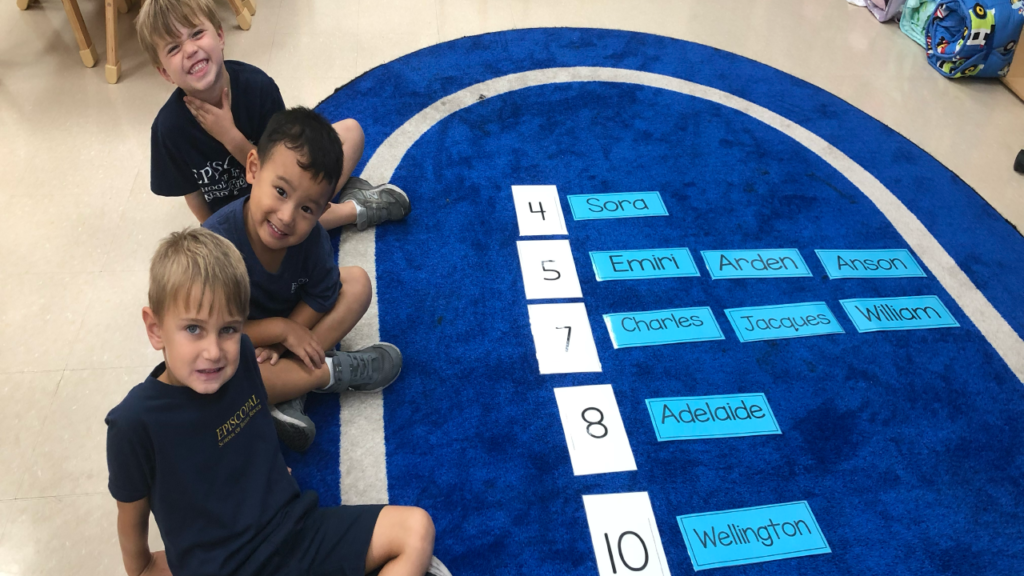
Comprehensive Spiral Curriculum
The Concrete-Pictorial-Abstract (CPA) method of instruction sets a firm foundation which equips students with principles they’ll need time and time again through an actively engaging, iterative and socially interactive curriculum. Developing Roots ensures consistent exposure to critical concepts throughout the year which prevents any student from falling too far behind.
Exploration
Students explore, collaborate, problem-solve, and reflect on rich tasks designed to build on their current knowledge. We energetically engage students as they make connections, discover patterns, and develop generalizations. This approach deepens their mathematical understanding, making learning both joyful and meaningful, while solidifying the foundations we are building.
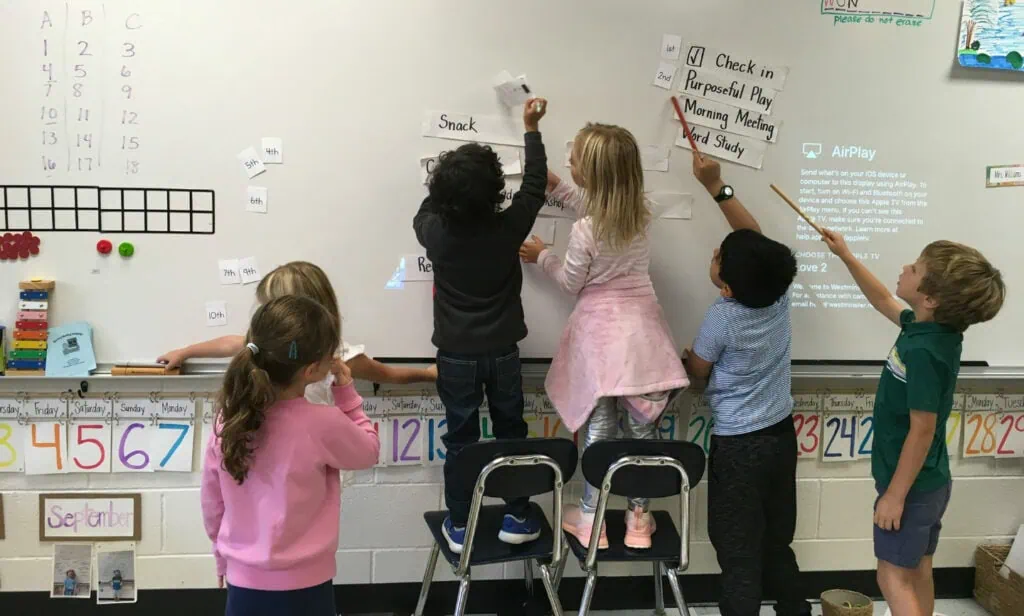
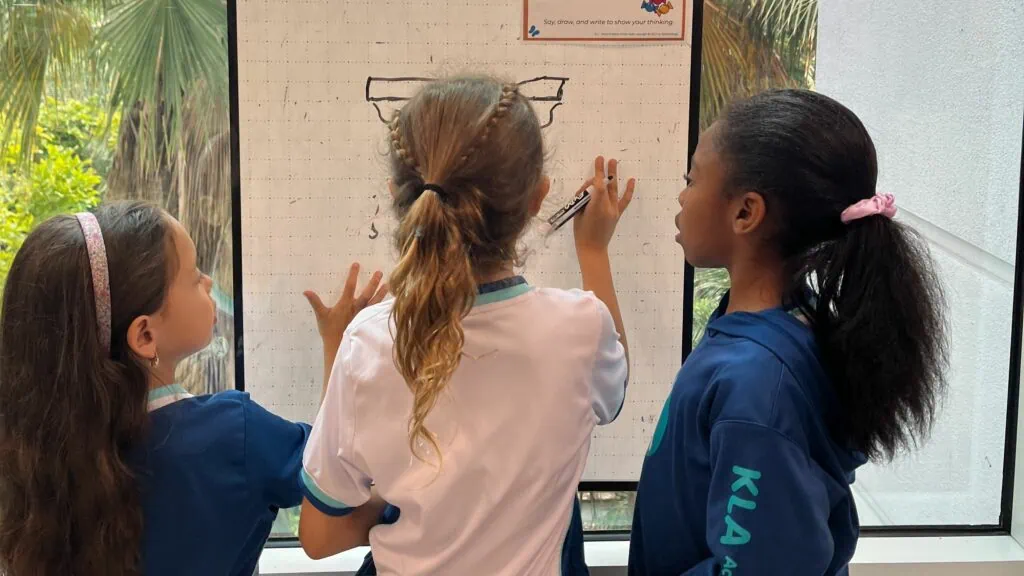
Communication
When students are challenged by their investigation, the ability to communicate both the ‘why’ and the ‘how’ become critical means to evaluate what they know and how well they’ve learned. Developing Roots not only teaches kindergarten kids math it teaches them to explain what they’ve learned, how they arrived at their solution, and why it works.
What Teachers Are Saying About Developing Roots
Never before have I attended such an excellent conference! Early childhood mathematics is complex. The creators of Developing Roots have developed a program that adds logistics and practicality to mathematical theory in a way that incorporates best practices and most importantly, in a way that is meaningful to young children. It is heavily researched, tested, and teach-approved. Even so, Sarah & Cheri realize the work is never finished and they’re happy to work with teachers as they work for teachers.
We just started Developing Roots this fall and the program has many strengths. Perhaps what I am most impressed with is how each and every lesson is developmentally appropriate for kindergarten children. The shelf work helps increase the fine motor skills they need across the curriculum, while simultaneously allowing them to practice the mathematical skills they need to learn in a fun and engaging way.
I loved how teacher friendly this [Developing Roots] program is. There is so much flexibility to make changes. You fit then program in your classroom, not your classroom into the program.
Similar to most districts, we strive to foster the growth of our students as mathematical thinkers and problem solvers who love math and math learning. For a long time, we struggled to find a curriculum and approach which would provide a solid foundation for our kindergarten students. We found our answer in Developing Roots. Through the challenging, hands-on, and developmentally appropriate approach to learning in this curriculum, our students are not only engaged, but also empowered as learners who are developing solid and transferrable understandings, skills, and beliefs about themselves as mathematicians. Our entire learning community could not be happier with what Developing Roots has brought to our students.
Developing Roots is the epitome of teaching math to kindergartners that really count! (HA!) This developmentally approach has reached each student in my class. I love it, the students crave it and the parents are impressed! In my 40+ years of teaching in the Midwest, East Coast, and finally the South, Developing Roots finally got it right!
My Kindergarten students LOVE math! The Developing Roots math curriculum has laid a wonderful foundation for them, providing amazing hands-on and engaging activities. My mathematicians have learned to be great problem-solvers! They enjoy making connections, exploring, and explaining what they have learned. The support we have been given through workshops and virtual meetings/coaching have been extremely beneficial. Sarah’s visit and the meaningful lesson were a perfect way to conclude our first year with Developing Roots.
